• Device name: Scanning Electron Microscopy (SEM)
• Device model: TESCAN-Vega3
• Made by the company: TESCAN, Czech Republic
• Operator: Shiva Pesaran
• Scientific supervisor of device: Dr. Dariush Khalili (member of the scientific faculty of the Chemistry Department of Shiraz University) -
• Phone: 07136137113 - Email: Khalili@shirazu.ac.ir
• Time of use: all days of the week except holiday
- Description:
Please read the following explanations before preparing the scanning electron microscope samples:
- 1- The cleanliness of the sample surface is very important. Therefore, before imaging, the surface of the sample should be cleaned of any dirt and grease with the help of acetone or alcohol. An ultrasonic device (high frequency sound waves) can also be used for rough surfaces.
- 2- If the powder samples are in micron dimensions, they are checked in solid form, and the samples with dimensions less than micron should be sonicated in alcohol or acetone for a certain time and immediately transferred to the laboratory.
- 3- The broken surface of the sample is required to observe the granulation of the ceramic samples that have been pressed and sintered.
- 4- To observe the thickness of the coatings, the samples must be mounted and after polishing, if necessary, chemically etched. If non-conductive mount materials are used, make sure that the height of the mount is not more than one centimeter and the end of the sample should preferably be outside the mount. It is better to use molds with a diameter of 3 cm or less.
- 5- To prevent deformation of aluminum samples, it is better to ultra-polish these samples after the final polishing (around 1000).
- 6- In order to observe the microscopic structure through BSE images, the surface of the sample must be well polished and then etched.
- 7- In order to prepare a favorable image of biological samples and other wet samples such as some polymers, it must be fixed and dehydrated in a suitable solution before the applicant refers.
- 8- Fossil samples related to geology students should be pasted on the base by the applicant from the previous day. The way to arrange the samples should be very clear and avoid placing many samples on the same stand.
- 9- The maximum number of images per sample is 5, and the request for more is subject to payment. It is mandatory for the applicant to be on time at the scheduled time, and any delay will cause irregularity in the appointment process, which will lead to the suspension of the applicant's appointment.
- Regarding the preparation of samples other than the above, refer to the device expert with the sample. Applicants are advised to bring similar images from scientific sources (authorized books or articles) to present to the machine operator.


